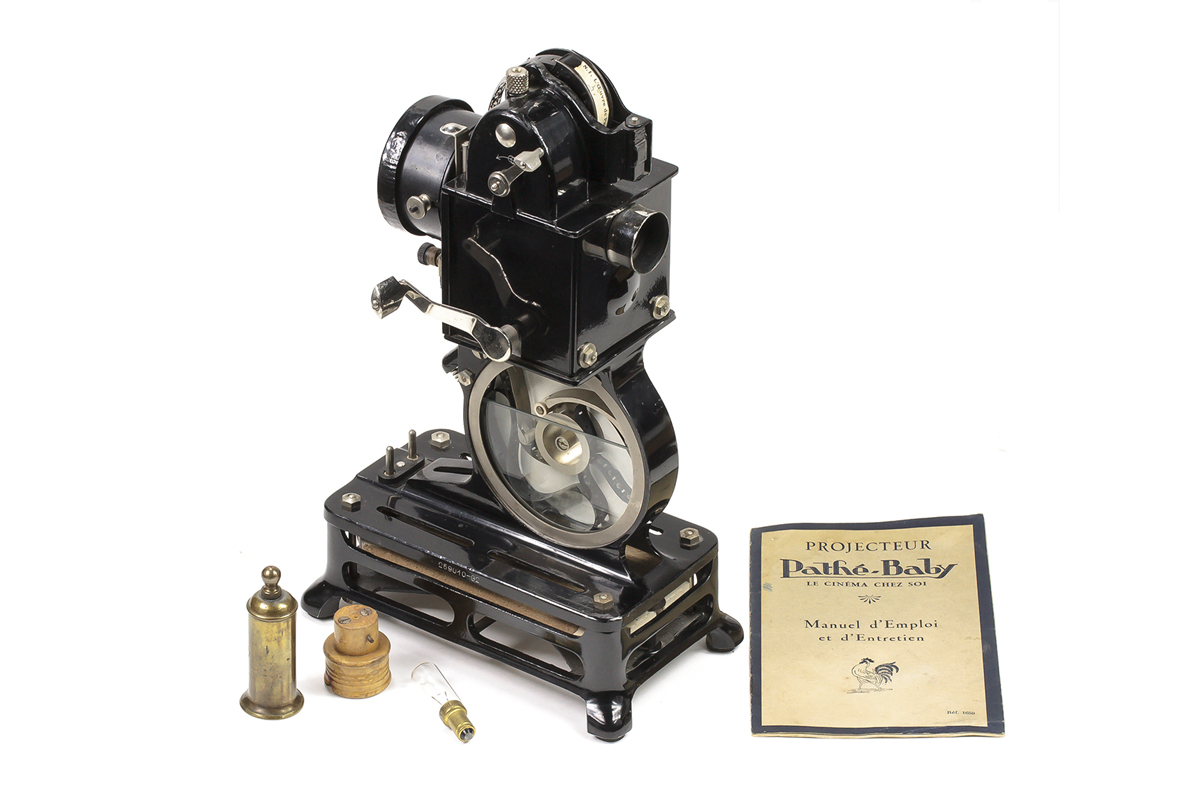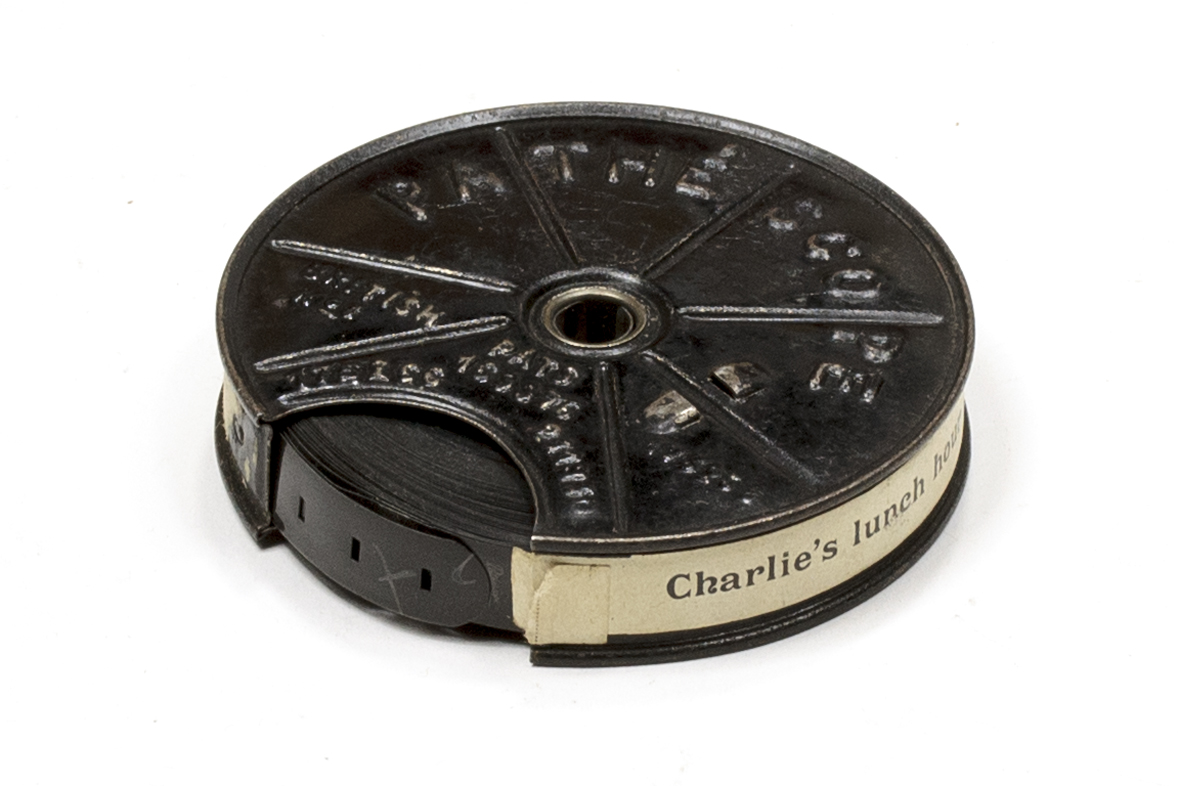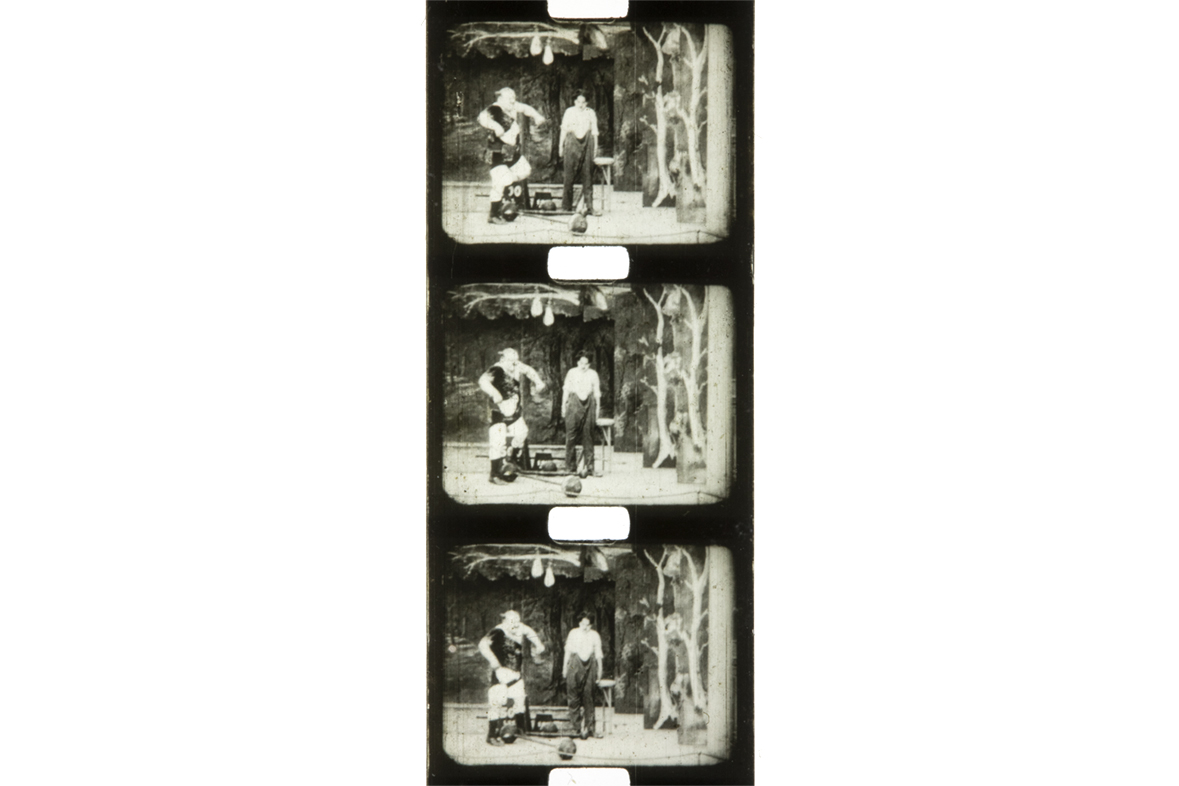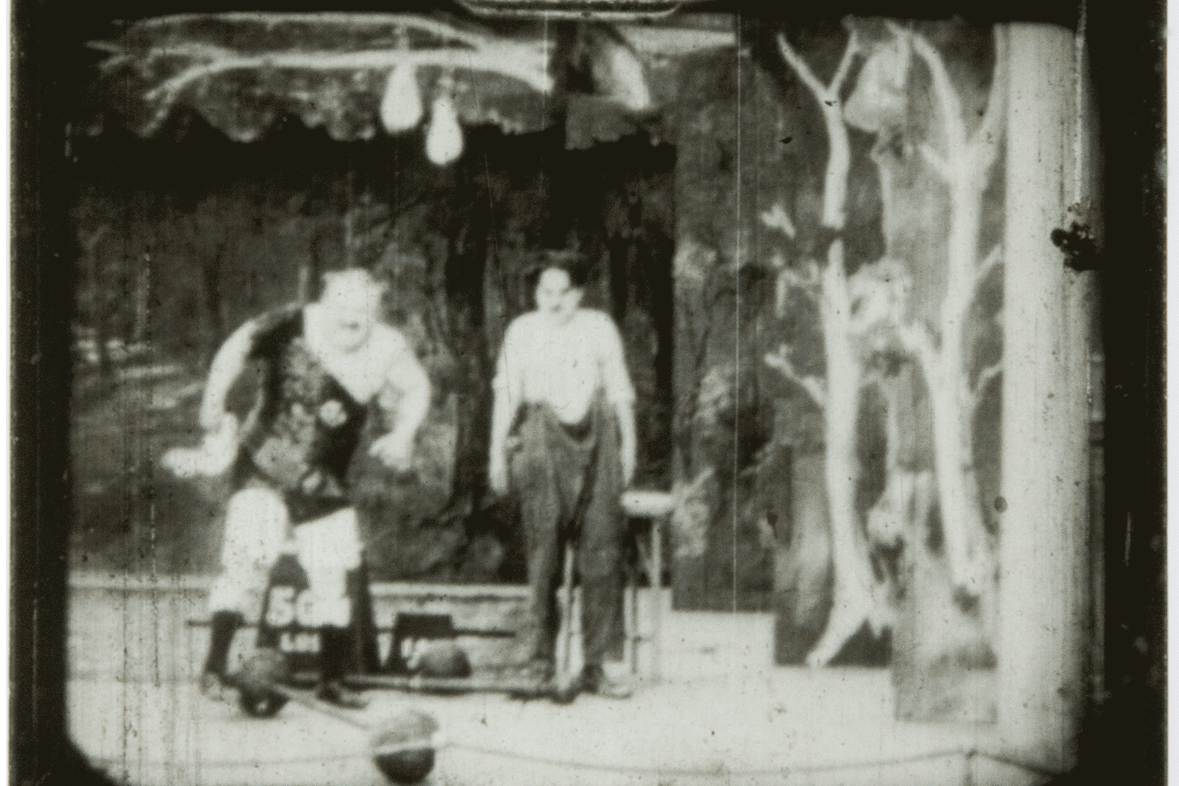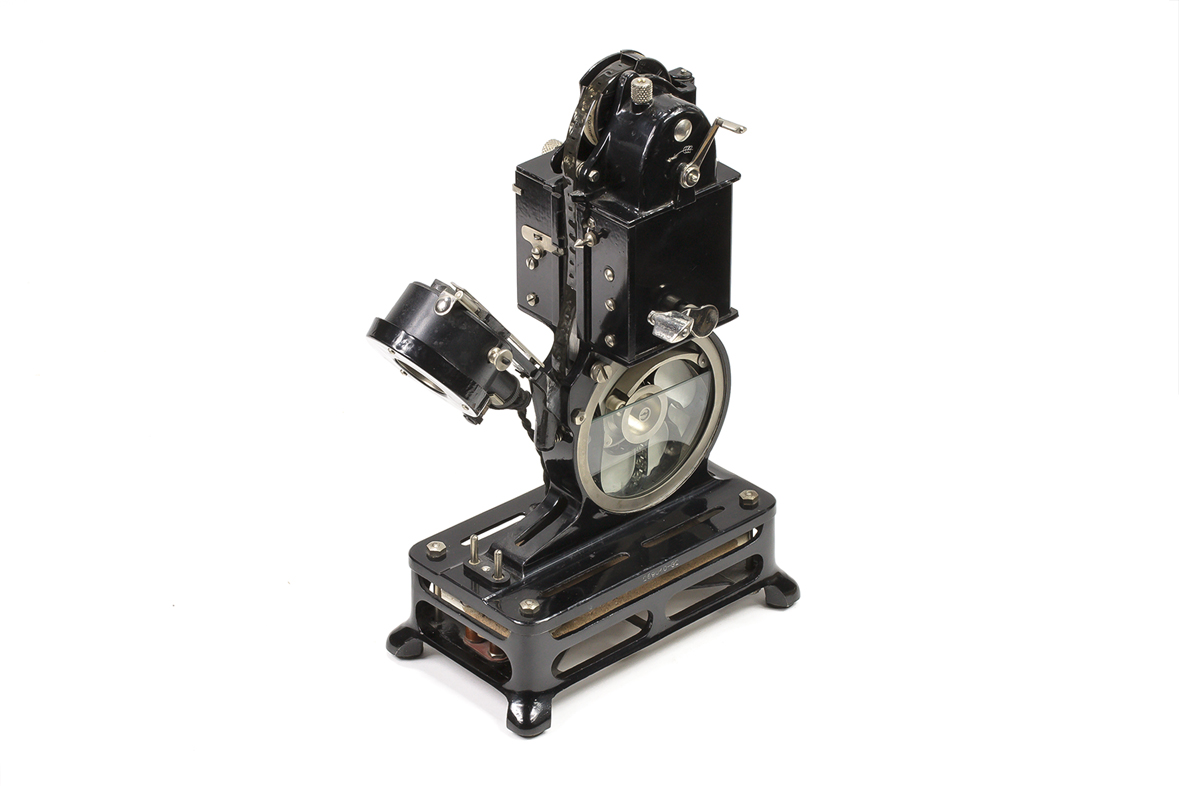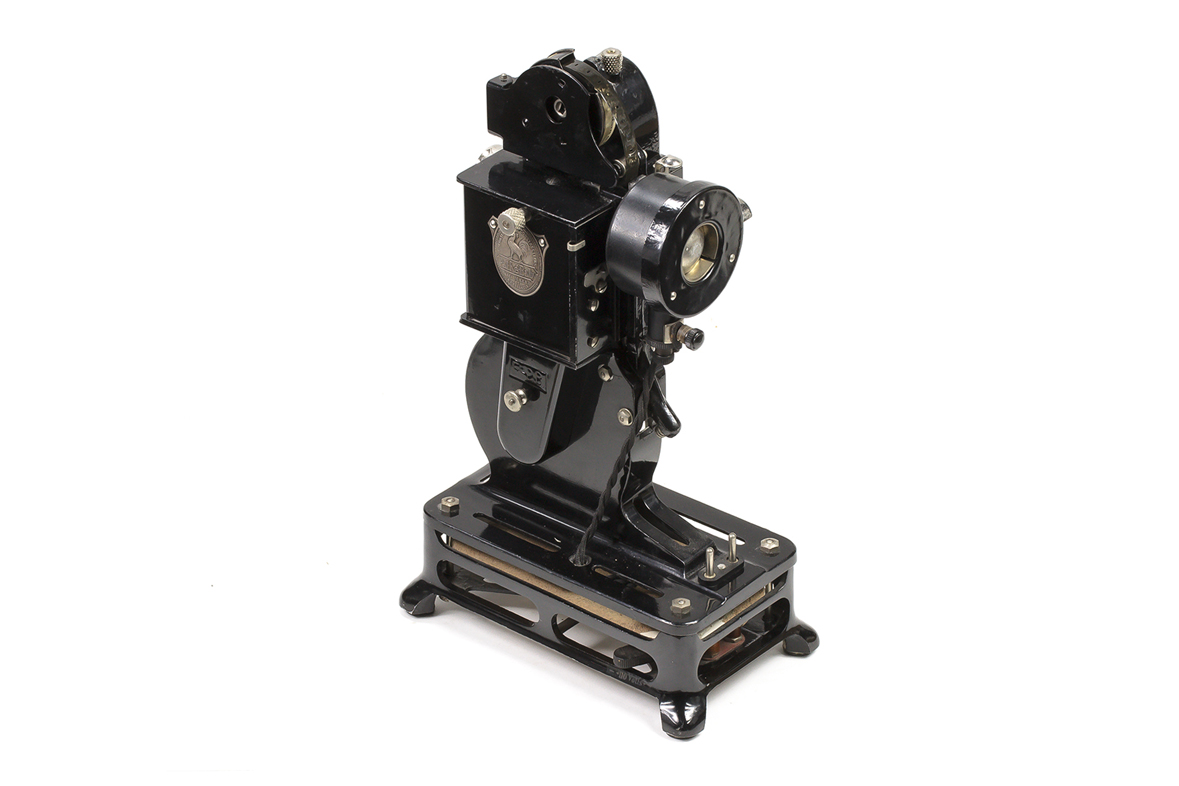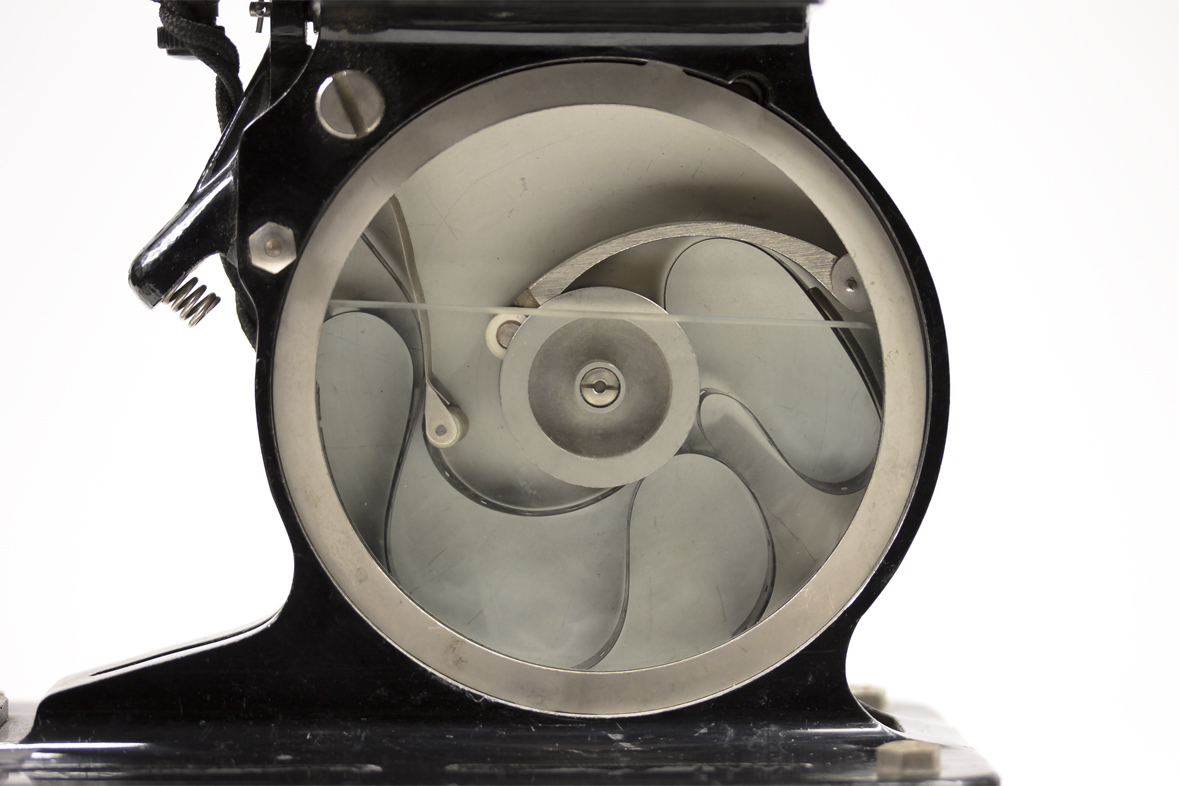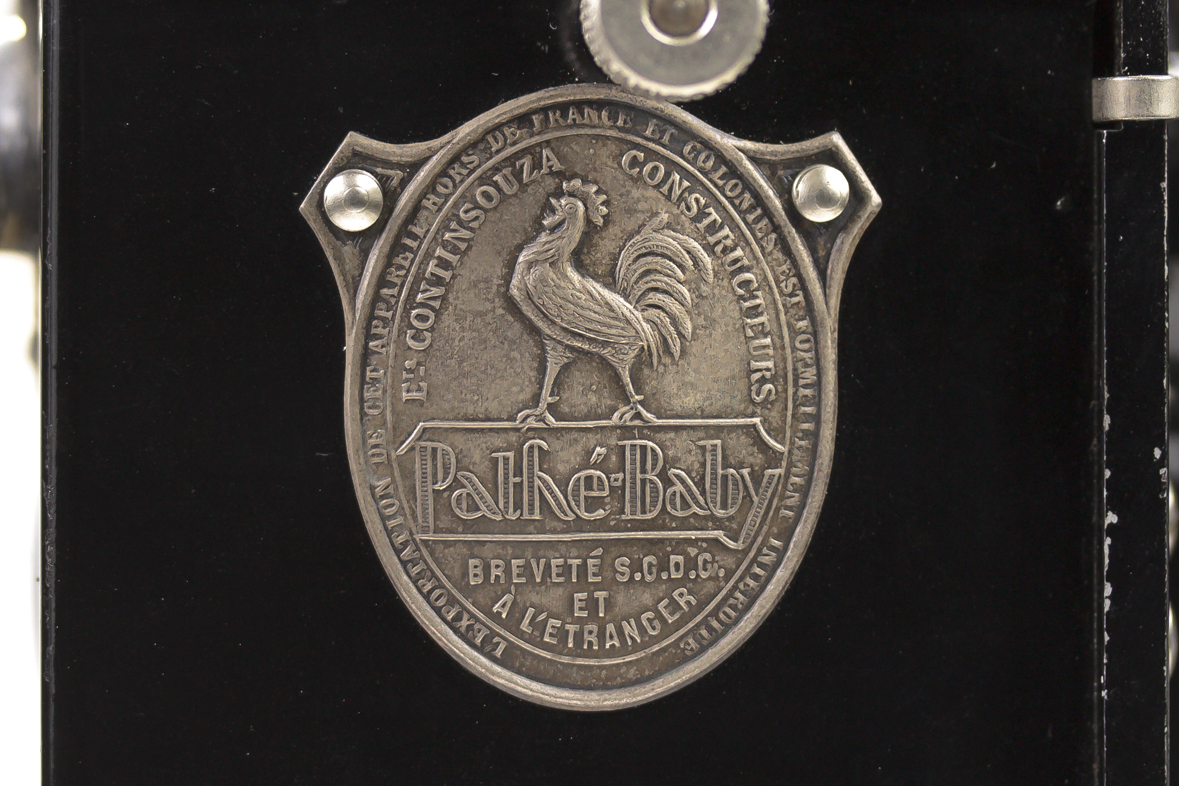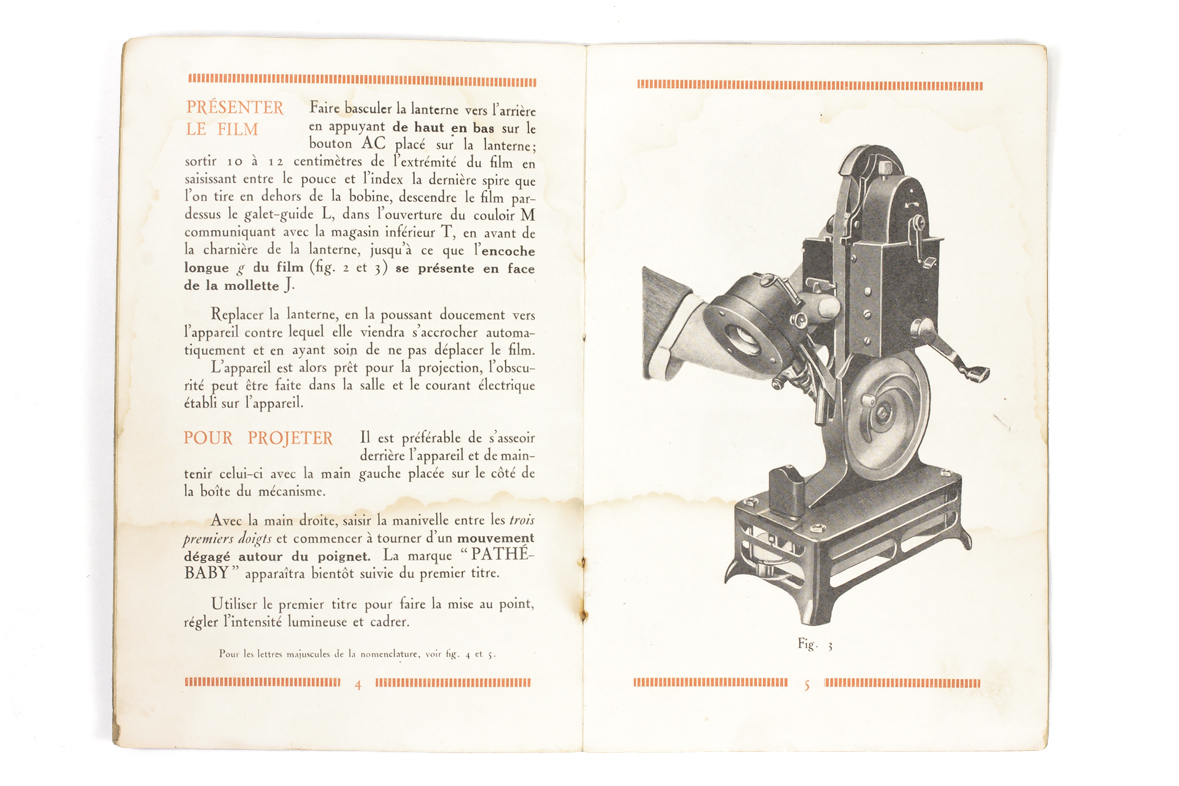Title: | Charlie's lunch hour |
Artist: | Charlie Chaplin |
Date: | 1922–1960s |
Material: | Cellulose acetate |
Dimensions: | 9.5 mm |
Company: | Pathé Frères |
Location: | Paris, France |
Pathé Kok was Pathé's first attempt at home cinema, but 28 mm film, while cheaper than 35 mm, was still expensive and the projector was bulky. Their second attempt was far more successful. In 1922 they introduced 9.5 mm along with a projector, the Pathé Baby, and a camera for taking home movies. Film for the projector was held in metal cartridges that were mounted directly on the machine. There were both hand-cranked and motorized versions. There was no take up reel: the film unwound into a receptacle at the bottom of the projector and was rewound into the cartridge either automatically or with a separate crank.
The format was very popular in Europe for three decades. Reductions from commercial films were supplied by Pathé. Eventually color (Dufaycolor) and optical sound were added. 9.5 mm became a standard film gauge in Europe and cameras and projectors were available froimg other manufacturers. Films were released on open reels as well as the Pathé Baby cartridge.
